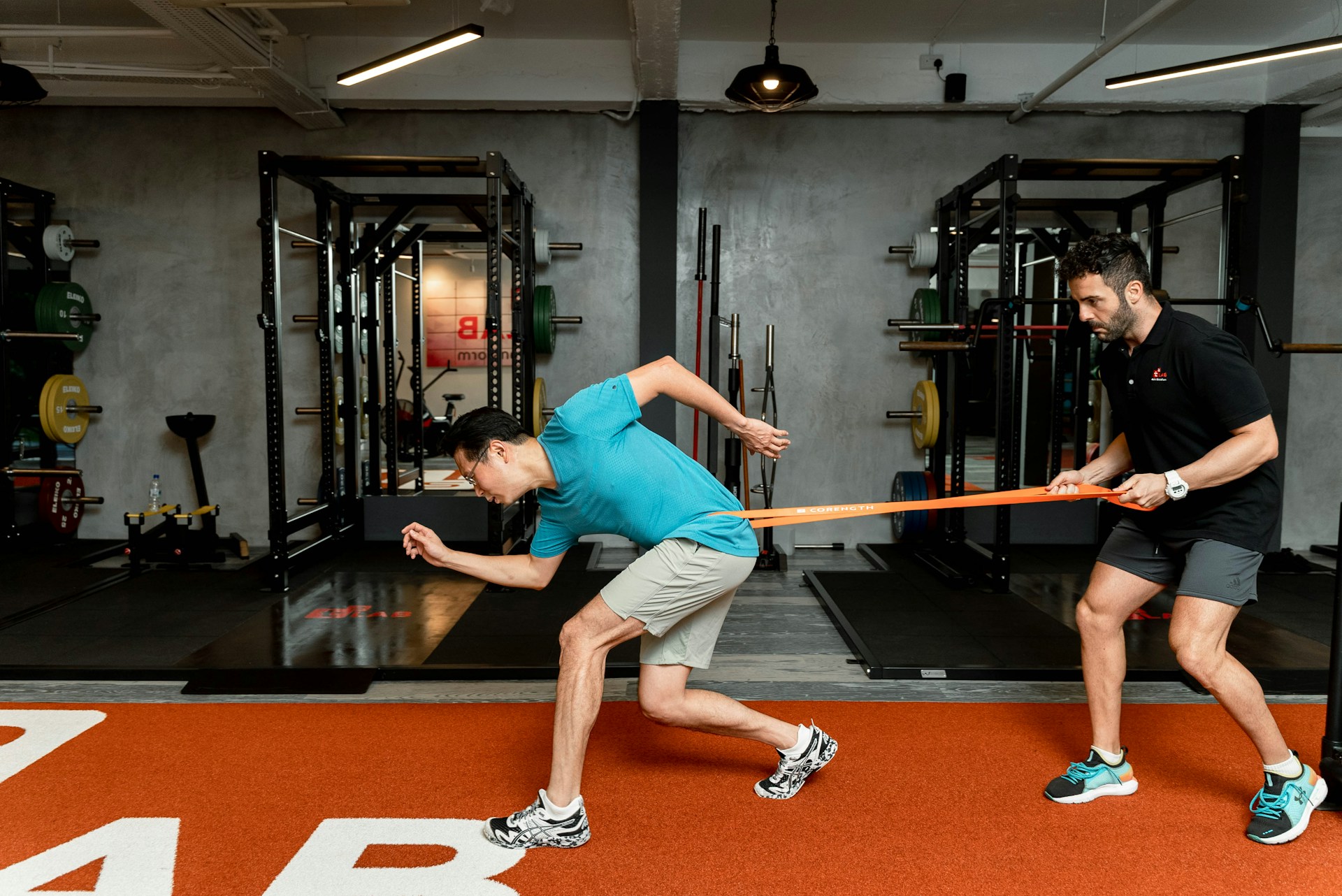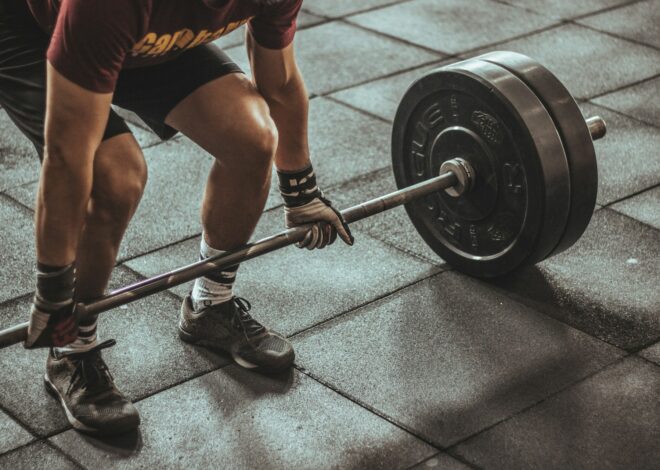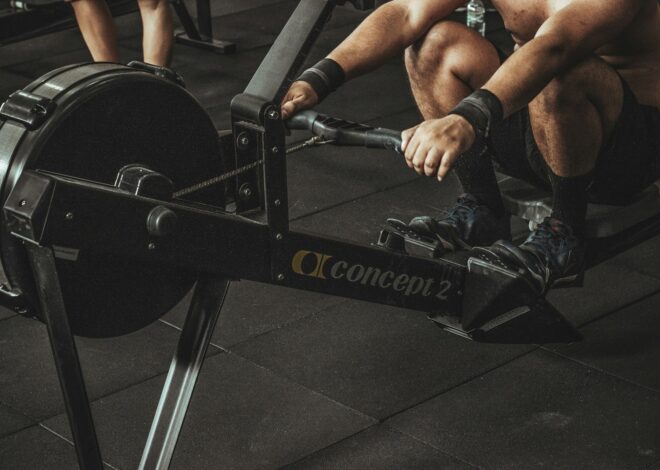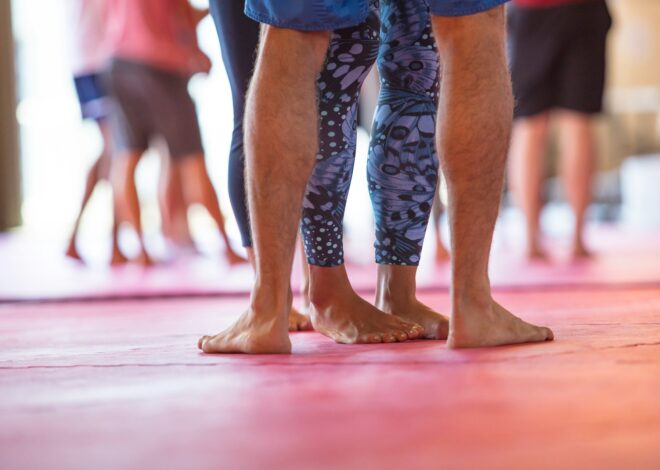
How to Build Explosive Power with Plyometric Exercises
Benefits of Plyometric Exercises
Incorporating plyometric exercises into your workout routine can bring about a multitude of benefits for individuals looking to enhance their athletic performance. These explosive exercises help in developing power, speed, agility, and strength by engaging fast-twitch muscle fibers, which are crucial for quick and powerful movements. Furthermore, plyometric exercises also aid in improving coordination, balance, and proprioception, all of which are essential for various athletic activities.
Athletes across different sports can greatly benefit from integrating plyometric exercises into their training regimen. Whether you are a basketball player looking to improve your vertical jump, a soccer player aiming to enhance your speed and agility, or a track and field athlete working on sprinting mechanics, plyometric exercises offer a versatile and effective way to elevate your performance. By incorporating these dynamic movements into your workouts, you can experience improvements in your overall athleticism, leading to better on-field or on-court results.
Understanding Explosive Power
Explosive power is a crucial component in athletic performance, particularly in sports that require quick bursts of energy and strength. It refers to the ability of muscles to generate maximum force in minimal time. This explosive strength enables athletes to accelerate rapidly, jump higher, and change direction swiftly, giving them a competitive edge on the field or court.
To improve explosive power, athletes often incorporate plyometric exercises into their training routines. These exercises involve rapid stretching and contracting of muscles, helping to enhance the efficiency of muscle recruitment and boost fast-twitch muscle fibers. By focusing on explosive movements like jumps, bounds, and plyometric push-ups, athletes can develop the speed, power, and agility needed to excel in their respective sports.
Muscle Recruitment in Plyometric Exercises
In plyometric exercises, muscle recruitment plays a vital role in generating explosive power. These exercises primarily target fast-twitch muscle fibers, which are responsible for quick and powerful movements. When performing plyometrics, the muscles undergo a rapid stretch followed by a strong contraction, allowing for greater force production.
By engaging multiple muscle groups simultaneously, plyometric exercises enhance coordination and neuromuscular efficiency. The body adapts to the demand for quick and forceful contractions, leading to improvements in strength, power, and speed. Plyometrics require the muscles to work in synergy, developing the ability to generate maximal force in minimal time, making them a valuable addition to any training program aimed at enhancing athletic performance.
Types of Plyometric Exercises
Plyometric exercises can be categorized into various types based on their primary focus and the muscle groups they target. Jump squats are a popular lower body plyometric exercise that helps improve explosive power in the legs by combining a squatting motion with a powerful jump. Box jumps are another lower body plyometric exercise that requires jumping onto a raised platform, aiding in enhancing vertical jump height and overall lower body strength.
Moving on to upper body plyometric exercises, clap push-ups are a dynamic movement where you explosively push yourself off the ground and clap your hands before landing. This exercise helps in developing upper body power and strength. Medicine ball throws are also effective for upper body plyometric training, involving throwing a weighted ball against a wall or to a partner to enhance muscle recruitment and power in the chest, shoulders, and arms.
Plyometric Exercises for Lower Body
Plyometric exercises for the lower body are particularly effective in improving explosive strength and power. These exercises focus on engaging large muscle groups such as the quadriceps, hamstrings, glutes, and calves to enhance performance in activities that require quick and powerful movements, such as sprinting, jumping, and change of direction. By incorporating lower body plyometric exercises into your workout routine, you can enhance your athletic performance and improve your overall physical capabilities.
Some common lower body plyometric exercises include squat jumps, box jumps, jump lunges, and depth jumps. These exercises not only help in developing lower body strength but also aid in improving coordination, balance, and agility. Including a variety of lower body plyometric exercises in your training regimen can help you achieve a well-rounded fitness level and excel in sports that demand explosive power from the lower body.
Plyometric Exercises for Upper Body
When it comes to targeting the upper body, plyometric exercises can be highly effective in enhancing power and strength. Exercises such as plyometric push-ups, medicine ball throws, and clap push-ups are excellent choices for engaging the chest, shoulders, and triceps explosively. These dynamic movements not only help improve muscle strength but also contribute to overall athletic performance by increasing upper body power.
Incorporating plyometric exercises for the upper body into your workout routine can lead to significant gains in explosive strength. By engaging in exercises that involve rapid contractions of the muscles, such as plyometric pull-ups and overhead throws, you can enhance your ability to generate force quickly. This can be particularly beneficial for athletes in sports that require upper body strength and power, such as basketball, volleyball, and tennis.
Incorporating Plyometric Exercises into Your Workout Routine
One effective way to enhance your workout routine is by incorporating plyometric exercises. These explosive movements can help improve your power, strength, and agility, making them a valuable addition to any fitness regimen. By adding plyometrics to your workouts, you can challenge your muscles in new ways, leading to greater gains in athletic performance and overall fitness.
To incorporate plyometric exercises into your routine, consider adding them towards the beginning of your workout when your muscles are fresh and able to generate maximum power. Start by incorporating a few basic plyometric exercises such as jump squats, box jumps, or burpees, then gradually increase the intensity and complexity as you become more comfortable with the movements. Remember to allow for an adequate rest period between sets to ensure proper recovery and prevent overtraining.
Safety Precautions for Plyometric Exercises
When performing plyometric exercises, it is crucial to prioritize safety to prevent injuries and optimize performance. One key safety precaution is to ensure proper footwear with adequate cushioning and support to absorb the impact of the exercises. Additionally, always perform a thorough warm-up before engaging in plyometric activities to prepare your muscles and joints for the high-intensity movements.
Another important safety measure is to maintain proper form and technique throughout the exercises. Avoid overexerting yourself or pushing beyond your capabilities, as this can lead to muscle strain or other injuries. It is also advisable to start with low to moderate intensity levels and gradually progress as your strength and conditioning improve to reduce the risk of overtraining or overloading your muscles.
Progressive Overload in Plyometric Training
To effectively progress in plyometric training, one must understand the concept of progressive overload. This principle involves gradually increasing the intensity, volume, or frequency of plyometric exercises over time to continually challenge the muscles and stimulate adaptation. By progressively overloading the muscles, athletes can continue to see improvements in explosive power, strength, and agility.
Progressive overload can be implemented in plyometric training by adjusting variables such as jump height, number of repetitions, rest periods, or the complexity of exercises. It is essential to carefully monitor progress and make incremental changes to ensure that the body is consistently pushed beyond its current capabilities. By following a structured and progressive overload plan, athletes can maximize their gains and minimize the risk of overtraining or injury.
Key Principles of Plyometric Training
Plyometric training is based on a few key principles that are essential for its effectiveness. One of the core principles is the concept of stretch-shortening cycle, which involves quickly stretching a muscle and immediately contracting it to generate explosive power. This rapid transition from the eccentric phase to the concentric phase is crucial in enhancing muscle strength and power.
Another fundamental principle of plyometric training is specificity. This principle emphasizes the importance of tailoring exercises to mimic the movement patterns and energy systems required for a particular sport or activity. By incorporating sport-specific movements into plyometric exercises, athletes can improve their performance in a more targeted manner, translating their training gains into enhanced on-field capabilities.
Common Mistakes to Avoid in Plyometric Exercises
When performing plyometric exercises, one common mistake to avoid is neglecting proper warm-up and stretching. Failing to adequately prepare your muscles and joints before engaging in high-intensity plyometrics can increase your risk of injury. Ensure you spend an ample amount of time warming up and stretching to prime your body for explosive movements.
Another mistake to steer clear of is neglecting proper form and technique. It’s crucial to execute plyometric exercises with the correct form to maximize effectiveness and prevent injuries. Focus on maintaining good posture, engaging the right muscles, and landing softly to absorb shock and reduce strain on your joints. Don’t sacrifice form for speed or height – prioritize quality movements over quantity.
Benefits of Plyometric Exercises for Athletes
Plyometric exercises offer athletes a range of benefits that can significantly enhance their performance. These explosive movements help improve muscle strength, power, and speed, making them especially beneficial for sports that require quick and powerful movements like basketball, soccer, and track and field. By incorporating plyometric exercises into their training regimen, athletes can boost their agility, explosiveness, and overall athletic performance.
Furthermore, plyometric exercises can help athletes improve their vertical jump, sprinting speed, and on-court or on-field performance. The dynamic nature of plyometric exercises engages fast-twitch muscle fibers, which are essential for explosive movements in sports. Athletes who regularly incorporate plyometric exercises into their workouts can expect to see improvements in their speed, power, and overall athletic capabilities, giving them a competitive edge on the field or court.
Incorporating Plyometric Exercises for Speed and Agility
Plyometric exercises are highly effective for enhancing speed and agility in athletes of all levels. By incorporating these explosive movements into your training routine, you can improve your ability to accelerate quickly, change direction efficiently, and react swiftly to on-field situations. These exercises focus on developing fast-twitch muscle fibers, which are crucial for generating powerful bursts of energy during sprinting, cutting, and other dynamic movements on the field or court.
When incorporating plyometric exercises for speed and agility, it is essential to start with foundational movements such as squat jumps, box jumps, and bounding exercises. These exercises help athletes build strength and coordination in the lower body while also improving their explosiveness. As you progress in your training, you can gradually increase the intensity and complexity of the plyometric exercises to further challenge your speed and agility abilities. Remember to always prioritize proper form and technique to maximize the effectiveness and safety of your plyometric training regimen.
Plyometric Exercises for Strength and Power
When it comes to enhancing strength and power through plyometric exercises, incorporating movements that focus on explosive power and quick muscle contractions is key. Exercises like box jumps, medicine ball throws, and jump squats are effective in targeting fast-twitch muscle fibers, which are essential for generating power during athletic activities. By engaging in these high-intensity plyometric exercises, individuals can improve their ability to produce force rapidly, resulting in enhanced strength and power output.
In addition to traditional plyometric exercises, incorporating advanced variations such as depth jumps, single-leg bounding, and clap push-ups can further challenge the muscles and enhance strength and power development. These exercises require a high level of coordination, balance, and explosiveness, making them ideal for athletes looking to improve their performance in sports that require quick bursts of power. By progressively overloading the muscles with more challenging plyometric exercises, individuals can continue to build strength and power, ultimately leading to improved athletic performance.
Plyometric Exercises for Vertical Jump
Plyometric exercises are a valuable tool for athletes looking to improve their vertical jump performance. By incorporating explosive movements such as jump squats, box jumps, and tuck jumps, athletes can enhance their lower body power and explosiveness. These exercises challenge the muscles to generate maximum force in a short amount of time, ultimately translating to improved jumping ability on the court or field.
For athletes aiming to increase their vertical jump, plyometric exercises offer a targeted approach to strengthen the muscles involved in the jump motion. By focusing on exercises that emphasize speed and power, athletes can enhance their ability to explode off the ground and reach greater heights. Consistent incorporation of plyometric exercises into training routines can lead to significant improvements in vertical jump height, contributing to overall athletic performance and success in sports that require explosive movements.
Plyometric Exercises for Sprinting
When it comes to enhancing sprinting performance, plyometric exercises can be a valuable addition to a sprinter’s training regimen. Plyometrics help sprinters develop explosive power, speed, and agility, which are crucial for achieving peak performance on the track. By incorporating plyometric exercises that focus on explosive movements into their training routine, sprinters can improve their stride length, stride frequency, and overall sprinting technique.
Common plyometric exercises for sprinters include squat jumps, bounding, box jumps, and depth jumps. These exercises help in strengthening the lower body muscles, improving coordination, and increasing the rate of force development, all of which are essential for sprinting. By regularly integrating plyometric exercises into their training program, sprinters can build the necessary strength and power to generate greater force with each stride and ultimately enhance their sprinting speed and performance.
Plyometric Exercises for Basketball Players
Basketball players can greatly benefit from incorporating plyometric exercises into their training regimen. These high-intensity, explosive movements can help improve their agility, speed, and vertical jump, which are essential skills on the basketball court. Plyometric exercises such as box jumps, depth jumps, and lateral bounds can help basketball players develop the power and strength needed to outmaneuver opponents and make quick movements on the court.
Additionally, plyometric exercises can help basketball players enhance their overall athleticism and endurance, allowing them to perform at their best for longer periods during games. By engaging in plyometric training, basketball players can improve their explosiveness, reaction time, and coordination, ultimately helping them become more well-rounded and competitive athletes on the court.
Plyometric Exercises for Soccer Players
Plyometric exercises can be highly beneficial for soccer players looking to enhance their performance on the field. These explosive movements help improve power, speed, and agility, which are all crucial components in soccer. By incorporating plyometric exercises into their training regimen, soccer players can develop the explosive strength needed to sprint past opponents, jump higher for headers, and change direction quickly during gameplay.
Some effective plyometric exercises for soccer players include box jumps, split jumps, lateral bounds, and depth jumps. These exercises target the lower body muscles, such as the quadriceps, hamstrings, and calves, helping soccer players generate more force with each movement. By regularly including plyometric exercises in their training routine, soccer players can improve their overall athletic performance and excel in various aspects of the game.
Plyometric Exercises for Volleyball Players
Volleyball players can benefit greatly from incorporating plyometric exercises into their training regimen. These explosive movements can help to improve the power and agility needed on the court. By engaging in plyometric exercises, volleyball players can enhance their jumping ability, speed, and overall athleticism.
Some key plyometric exercises that are particularly beneficial for volleyball players include box jumps, depth jumps, and tuck jumps. These exercises target the lower body muscles used in jumping and landing, helping to increase explosiveness and strength. Additionally, incorporating lateral jumps and bounding exercises can improve agility and quickness on the court. By including these plyometric movements in their training routine, volleyball players can enhance their performance and have a competitive edge during both practice and games.
Plyometric Exercises for Track and Field Athletes
Track and field athletes can greatly benefit from incorporating plyometric exercises into their training regimens. These explosive movements help improve their power and speed, which are crucial for sprinting, jumping, and throwing events. By enhancing their muscle strength and coordination through plyometrics, athletes can achieve better performance and reduce the risk of injuries on the track or field.
Jump variations like box jumps, depth jumps, and single-leg hops are excellent plyometric exercises for track and field athletes looking to enhance their vertical jump and explosiveness. These exercises target the lower body muscles, including the quadriceps, hamstrings, and calves, essential for generating power during takeoff and landing phases of jumps. Additionally, incorporating sprint-specific plyometric drills such as bounding and skipping can help athletes improve their sprinting technique, acceleration, and overall speed on the track.
• Box jumps, depth jumps, and single-leg hops are great for enhancing vertical jump
• Target lower body muscles like quadriceps, hamstrings, and calves
• Improve power during takeoff and landing phases of jumps
• Bounding and skipping drills can enhance sprinting technique
• Acceleration and overall speed on the track can be improved with sprint-specific plyometric exercises













